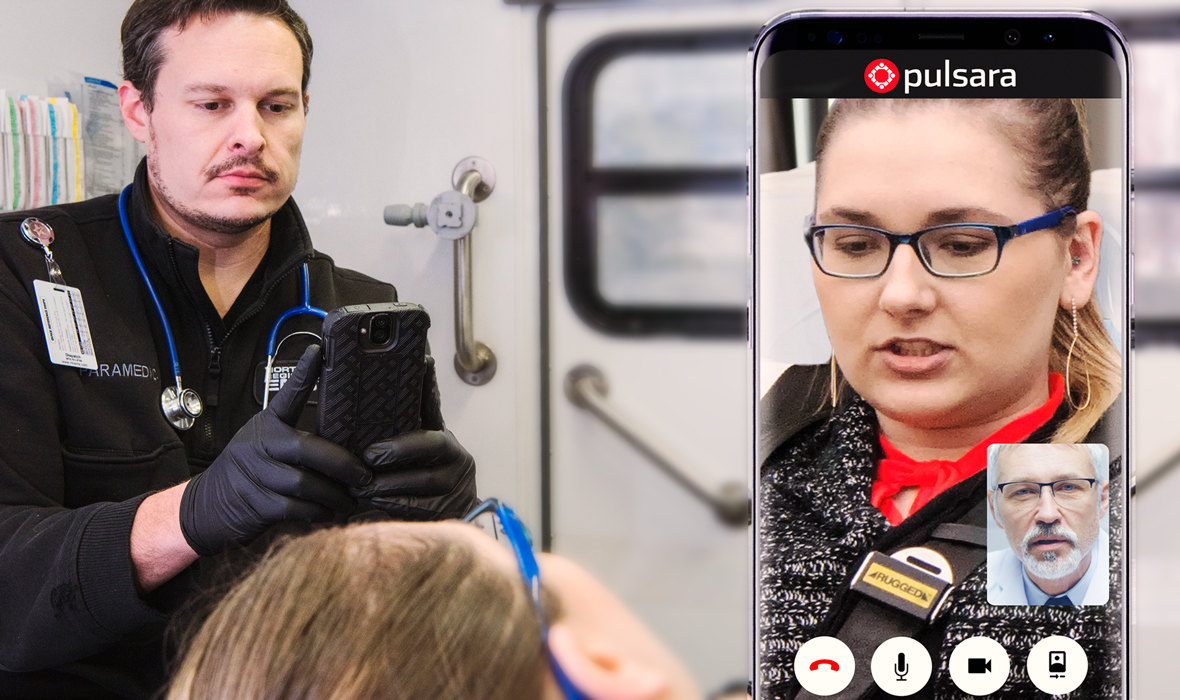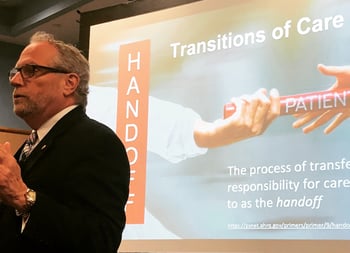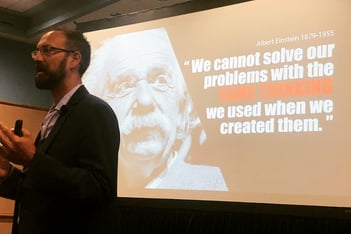Pulsara Around the World - 2025 Recap and January 2026
December Recap After an incredibly busy events year with 102 conferences, trade shows, and sponsorships, December was on the slower side for us, with...
2 min read
 Team Pulsara
:
Mar 25, 2020
Team Pulsara
:
Mar 25, 2020

Editor's Note: Pulsara partnered with the Center for Patient Safety to discuss how to improve communication during time-sensitive emergencies at EMS Today 2020. Special thanks to Alyssa Wickham, with the RedFlash Group, for writing today's post.
—
When it comes to ensuring patient safety and positive outcomes in emergency care, one factor almost always plays a role: communication. At EMS Today in Tampa Bay, Florida, Kris Kaull, Pulsara’s Chief Marketing Officer, joined Brian LaCroix, EMS coordinator for the Center for Patient Safety and President of the National EMS Management Association, to discuss how communication plays a vital role and what causes communication breakdowns in healthcare settings.
Communication is an exchange of information—whether verbal or electronic—that requires a number of factors to happen successfully. In an emergency response setting, it’s even more important for communication to occur in a manner that is calm, focused and well-executed, even when the stakes are high. One interruption in a flow of data or misunderstanding in a conversation can put the life of a patient at risk.

Kaull and LaCroix explained how the work of EMS personnel, while intense and stressful, requires them to be self-aware and clear communicators in order to create life-saving outcomes for the patients they care for.
It’s important for EMS leaders and clinicians to foster and embrace a culture of safety in their agencies to ensure their patient can experience the best outcomes possible, especially during transitions of care when communication is key.
Based on a discussion in a previously recorded podcast by MCHD assistant medical director, Casey B. Patrick, and Kris Kaull, the veteran paramedics/EMS leaders reminded the audience of seven aspects of time-critical emergency care that can sometimes impact our ability to communicate effectively and stay focused on patient safety and survival.
1. Rushing vs. moving quickly
Even in time-sensitive emergencies, stop and think when providing care. There is a difference between responding quickly to accelerate treatment and carelessly rushing.
2. Working outside your normal environment
Critical emergencies can occur anywhere, so it’s important to stay focused on the patient’s survival, regardless of the surroundings you’re in.
3. Groupthink vs. teamwork
EMS teams are comprised of multiple people to support each other and work together to create the best outcomes possible.

4. Relying on the expert (or being that expert)
Don’t doubt your ability to provide life-saving care, but also know when to ask for a second opinion of another knowledgeable team member.
5. Focusing on tasks
Treating the patient successfully is the priority. Make checklists and have a back up plan with your team.
6. Information overload
Emergency response requires patient data and sometimes there can be too much or too little. Know what data is the most important to the patient’s needs.
7. Physical and emotional stress or fatigue
EMS personnel lead stressful livelihoods and need to take a timeout. Take rest when needed as its key to optimal performance.

December Recap After an incredibly busy events year with 102 conferences, trade shows, and sponsorships, December was on the slower side for us, with...

Editor's Note: In July 2025, EMS1 and Fitch & Associates released their annual EMS trend survey, What Paramedics Want, proudly sponsored by Pulsara....
![[PRESS RELEASE] Published Research Finds Up to 31% Faster STEMI Treatment Times in Rural Hospital Setting with Pulsara](https://www.pulsara.com/hubfs/_1_website-page-blog-assets/pulsara-hosp-teams-assign-cardio-stemi-rn-1200x701.jpg)
Published research shows how using Pulsara, alongside standardized field activation and a focus on stakeholder relationships, improves STEMI care and...